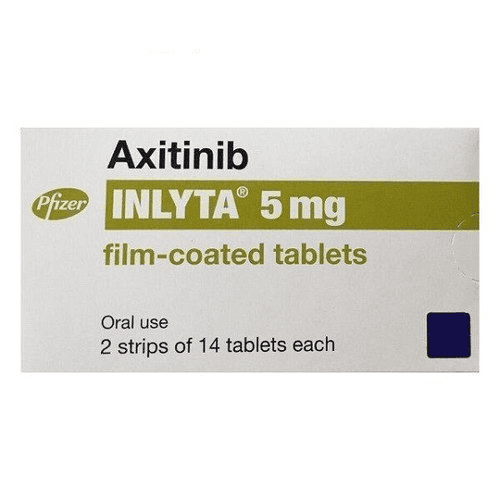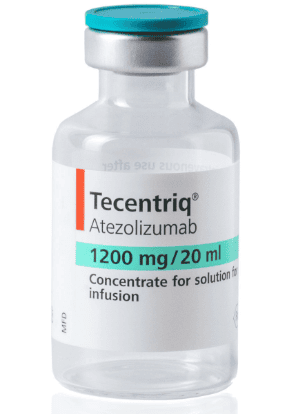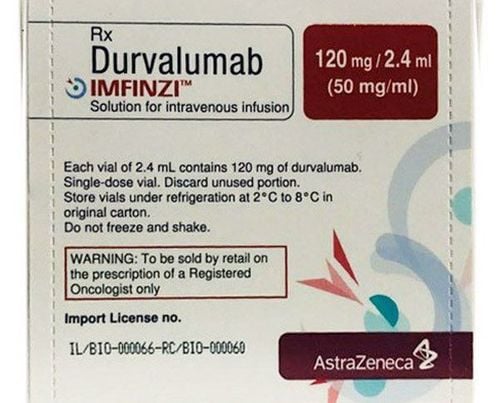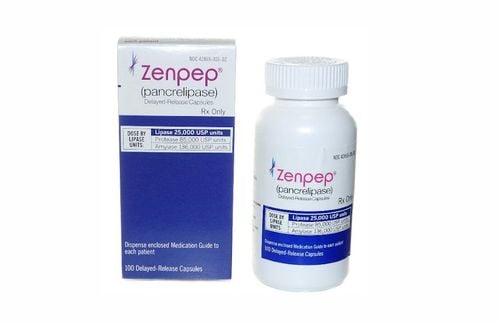This is an automatically translated article.
Abingem is currently being used in the treatment of a number of medical conditions such as ovarian cancer, breast cancer, pancreatic cancer,... So how should Abingem be used?
1. What are the effects of Abingem?
Abingem is prepared in the form of lyophilized powder for injection, with the main ingredient in each vial is Gemcitabine 1.4g.
Abingem is indicated in the following cases:
Ovarian cancer: Abingem is used in combination with carboplatin to be used in patients with advanced ovarian cancer that has recurred at least 6 months after the end of the treatment. End platinum compound treatment. Breast cancer: Abingem in combination with paclitaxel is used in the initial treatment of patients with metastatic breast cancer after failure of previous anthracycline therapy. Except when anthracycline cannot be used. Non-small cell lung cancer (NSCLC): Abingem is used together with cisplatin for the initial treatment of patients with locally advanced, inoperable non-small cell lung cancer. Pancreatic cancer: Abingem is used as the first-line treatment of patients with locally advanced or metastatic pancreatic cancer. Abingem is indicated in patients who have previously taken 5-FU. Abingem is contraindicated in people who are hypersensitive to Gemcitabine or any of its ingredients.
Pay attention to precautions when using Abingem in the following cases:
Patients with bone marrow failure. Patients with renal failure, liver failure. Patients receiving Abingem should be closely monitored. It may be necessary to treat patients who exhibit toxic effects of the drug. Avoid using Abingem for pregnant or lactating women, as it may be toxic to the fetus or nursing infant.
2. Usage and dosage of Abingem
Abingem is used by intravenous infusion, mixed with 0.9% NaCl solution. Dosage of Abingem drug should be according to the doctor's prescription, the reference dose for specific cases is as follows:
Treatment of non-small cell lung cancer: Monotherapy: Use Abingem at a dose of 1,000 mg/m2 intravenously over 30 minutes. Repeat this dose once a week for 3 weeks, then stop for 1 week. Then repeat the 4-week treatment cycle as above. Reduce the dose of Abingem based on the degree of toxicity occurring in the patient. Combination use: Abingem is used in combination with cisplatin according to the following 2 regimens: 3-week regimen: Use Abingem at a dose of 1,250 mg/m2, intravenous infusion over 30 minutes on days 1 and 8 of a day. 21 day cycle. Use cisplatin at a dose of 75-100 mg/m2 on day 1 of a 21-day cycle, before using Abingem. The dose of Abingem may be reduced based on the degree of toxicity in each patient. 4-week regimen: Using Abingem at a dose of 1,000 mg/m2, intravenous infusion over 30 minutes on days 1, 8 and 15 of a 28-day treatment cycle. Use cisplatin at a dose of 75-100mg/m2 on day 1 of a 28-day treatment cycle, after taking Abingem. The dose of the drug can be reduced based on the degree of toxicity in each patient. Pancreatic cancer: Use Abingem at a dose of 1,000 mg/m2 intravenously over 30 minutes. Repeat this treatment once a week for 7 weeks, then take a 1 week break. Then continue taking this dose once a week for 3 weeks, then take a week off. Next, repeat this 4-week treatment cycle. Reduce drug dose based on the degree of toxicity occurring in the patient. Bladder cancer: In patients with bladder cancer who are intolerant to cisplatin in combination therapy, physicians should consider using Abingem as monotherapy. Monotherapy: Use Abingem at a dose of 1,250 mg/m2 intravenously over 30 minutes on days 1, 8 and 15 of a 28-day treatment cycle. Then repeat this 4-week treatment cycle. Combination use: Use Abingem at a dose of 1,000 mg/m2 intravenously over 30 minutes on days 1, 8 and 15 of a 28-day treatment cycle. Cisplatin is used at a dose of 70 mg/m2 daily on the 1st day after Abingem or on the 2nd day of each 28-day treatment cycle. Then repeat this 4-week treatment cycle. Reduce drug dose based on the degree of drug toxicity occurring in the patient. A clinical trial showed that myelosuppression was more common with cisplatin at a dose of 100 mg/m2. Breast cancer: Use Abingem at a dose of 1,250 mg/m2 intravenously over 30 minutes, on days 1 and 8 of a 21-day treatment cycle. Combined use of paclitaxel at a dose of 175 mg/m2 was administered intravenously over 3 hours after Abingem administration.
3. Abingem side effects
Some of the side effects that need attention of Abingem include:
Myelosuppression is a common side effect when taking Abingem. Anemia, thrombocytopenia, leukopenia and other blood disorders have been reported in some patients receiving Abingem. The hematologic toxicity of Abingem should be closely monitored, especially at high doses. Mild reductions in blood cell counts and the appearance of petechiae have been reported in patients receiving Abingem. In addition, no cumulative toxicity was observed when using Abingem. There have been reports of Abingem causing cardiovascular toxicity such as arrhythmia, congestive heart failure, myocardial infarction, capillary leak syndrome, hypertension, edema, paresthesia, somnolence. There have also been isolated cases of severe hypertension with the use of Abingem. Common side effects of Abingem include:
Fever is usually caused by bacterial infection Proteinuria Hematuria Mild elevation of serum transaminases without clinical symptoms. Shortness of breath Less common side effects of Abingem include:
Nausea, vomiting. Diarrhea Constipation Mucosal membrane disorders Hemorrhagic pneumonia and fatal pulmonary toxicity. Baldness Skin rash Itching Recurrent dermatitis due to radiation therapy Erythema Skin ulcers Pseudotumoroma Weakening Bone pain If you experience any side effects of Abingem, you should immediately inform your treating doctor for treatment. timely.
4. Interaction of Abingem with other drugs
There are no specific studies on the interaction of Abingem with other agents. When Abingem is combined with radiation therapy: Life-threatening toxicity has been reported. Abingem should be used after remission of acute radiation-induced toxicity or at least 1 week after radiation therapy. Yellow fever or other liver disease vaccines should not be used with Abingem because of the risk of death, especially in immunocompromised patients. Abingem is known for its use in the treatment of cancer. In order for the drug to be effective, the patient should read the instructions carefully before using and follow the instructions of the specialist doctor.
Please dial HOTLINE for more information or register for an appointment HERE. Download MyVinmec app to make appointments faster and to manage your bookings easily.













